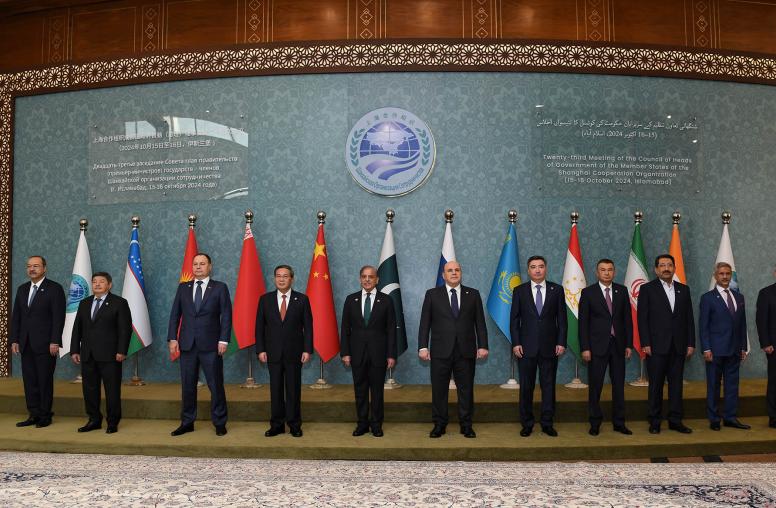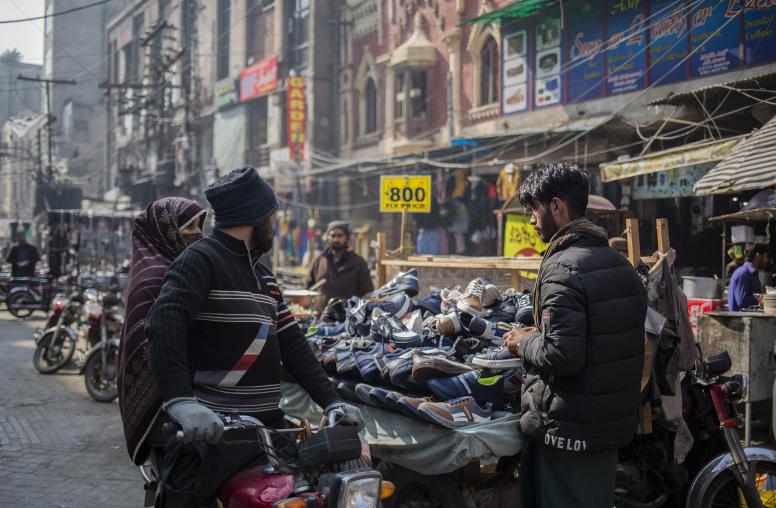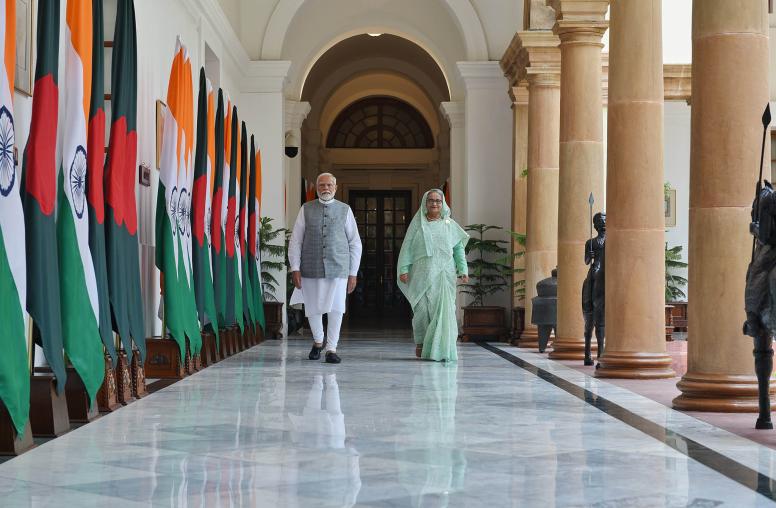Many of us who grew up in the United States consumed children’s media such as “Mister Rogers’ Neighborhood,” “Sesame Street,” storybooks, and comic books. In the early 1990s in Pakistan, state television aired programs that were designed to amuse children such as “Ainak Wala Jin” (“The Spectacled Genie”). For decades, however, children’s media has been curiously absent in Pakistan. That changed last week when state television launched a new channel, Teleschool, in the wake of school closures due to COVID-19. With the Pakistani curriculum now beaming into millions of homes nationwide, the country has a chance to re-think the content of its failed education system and how children’s television media can help fill the gap.

In 2014, I was USIP’s country representative in Pakistan, where we funded children’s media with a 3D cartoon called “Quaid Se Batein” (QSB), or “Talks with Jinnah,” designed to teach children civics. The three-minute long episodes followed a little girl named Zainab who runs into problems, such as trash on the street, her father forbidding her to play with a friend who is “different,” or being told that girls can’t play cricket. Zainab takes a nap and meets Pakistan’s founding father Jinnah in a dream who shows her why these norms must change. She wakes up and leads her peers in addressing the problem. QSB got free prime time airing on Pakistan’s largest private television channel and went viral with 14 million views on YouTube. It was also used in government schools.
After I left USIP, I studied QSB to test our assumptions about how the cartoon would create impact and sustain after our funding ended. What we learned—through interviews with major media companies attempting to produce successful children’s media, government officials, teachers, and students—might help producers of children’s television media today avoid our mistakes.
“I have a 5 year old,” said Shoaib Iqbal, founder of The Little Art, which curates the Lahore International Children’s Film Festival, “And the moment I try to educate her, she’s off.”
The Importance of Repetition and Engagement
In the zeal to educate children, it is easy for adults to forget how important it is to engage them. It is difficult to force children to do or watch something that they do not enjoy. But if they enjoy it they will do it repeatedly. That repetition is the path to impact.
Research on how media impacts behavior suggests that repetition and extended exposure are key. Watching violent media or seeing a Coke advertisement can prime a person’s behavior immediately afterwards but a single exposure is not likely to shift behavior in the long run, or even be remembered. But continuous exposure to certain content can have a more permanent effect on how the brain is wired.
“The value of using art, stories, and other indirect methods with children is that it can mask education as entertainment,” said Iqbal, “If you engage kids by involving them in an entertaining story or piquing their curiosity, they will learn without realizing that they are being taught.”
The challenge is that those who produce children’s media are, by default, adults. With QSB, we thought children would be enthralled by the Pixar-quality 3D animation. Instead, they saw through the lack of character and plot development. What we saw as meaningful lessons about civic behavior was lecturing and moralizing. While we saw the main character as empowered, some girls wondered why she kept dozing off at critical moments and relied so much on Jinnah to enlighten her rather than figuring things out on her own.
The lessons abounded. “She was too adult-ish for kids,” said Hassan bin Rizwan, co-founder and CEO of Muse. “She looked like a 4 year old but talked like a 12 or 13 year old.” On engagement tests, children tensed when they tried to understand Jinnah’s formal Urdu vocabulary. In stores, salespeople told us merchandise for the socially motivated action cartoon, “Burka Avenger,” sold out while Zainab and Quaid were still on the shelves.
If we had understood the importance of engaging children, we would have involved them in production and content testing, as Nickelodeon, “Sesame Street,” and Orenda in Pakistan do.Orenda’s thesis, based on observation of children in government schools, is that engagement is central to learning and wanting to go to school. But schools are not engaging children. “Children complain that they are bored and will physically escape schools during the day,” said Haroon Yasin, co-founder and CEO of the Orenda Project. They animated the curriculum, now available as an app, Taleemabad, and airing as part of Teleschool. Adapting the Stallings Classroom Observation System, they observed students watching it noting signs of disengagement. “When their attention was falling, we added an element of surprise and action,” said Yasin, “Anything that is a break away from the normal—a sudden plot change, a scuffle, a loud noise.”
According to Iqbal, recognizing children as independent human beings rather than as extensions of parents and teachers is a matter of child rights. “Everyone is trying to teach [children] and treat them as dependents. As a society, we don’t understand children. The priorities are to entertain, inspire, then educate. Otherwise it doesn’t work.”
Pakistan’s federal education ministry mobilized rapidly to get Teleschool on air. Three hundred companies, organizations, and people donated their content. The World Bank stepped in to support the hourly cost of a new broadcast. The adults involved with Teleschool hope the effort will sustain past the COVID-19 crisis as a way to reach out-of-school children and illiterate adults.
State television, called Pakistan Television (PTV), covers 90 percent of Pakistan’s territory. Sixty-three percent of Pakistani households have televisions. By contrast, only 36 percent have mobile internet, but even fewer would know how to navigate it given language and literacy barriers. Phones also tend to be owned by men.
Engaging children while teaching them will be a challenge for Teleschool. With an absence of local language children’s media, storybooks—only 2.5 percent of children under five in Punjab have three or more storybooks—and the second-largest out-of-school population in the world, the country’s record on engaging children’s creative capacities is low.
“Papa says you should study not play,” one fifth grade girl told me. In speaking to students, we found that they have little time for play. After school, most of them went to tutors and madrassa where they learn to read the Quran. By the time they got home, it was time for dinner and perhaps some chores or watching the news with family.
Strengthening Pakistan’s Education System
Teleschool has an opportunity to correct for the country’s education system, which is deeply flawed in its design. Despite “model” curricula, only an estimated 4 to 12 percent of third graders in Pakistan would be considered fluent readers who comprehend most of what they are reading. Urdu, the national language but the mother tongue for only 8 percent of the country, is often pointed to as the most hated and difficult subject. Pakistan’s insistence on the use of languages in schools that children and teachers don’t understand has resulted in a loss of language skills—perhaps explaining, at least in part, why “Tom and Jerry,” which has no language, was the most favorite cartoon in our sample of fifth graders.
Teleschool should focus on building language, literacy, and cognitive skills, which most Pakistani children lack regardless of their age or grade. The channel’s content can be iterated for local language channels so children in Pakistan can finally be educated in their mother tongue, in line with international best practice. Same-language subtitling has been shown to boost literacy with children and adults. Characters can help children gradually build vocabulary in Urdu and English.
Language, literacy, and cognitive skills are what many of us once gained from shows like “Sesame Street.” They are the basis for building citizenship, critical thinking and creativity, and habits for lifelong learning. “Sim Sim Hamara,” Pakistan’s USAID-funded “Sesame Street” which was quickly dismantled when newspapers reported never-proven rumors of corruption, deserves a second chance.
“There is this big dilemma about what kids want and what the adults want the kids to want,” said Rizwan, “We engaged a comedian to explain a science lesson. When we shared it with the experts they objected … But kids loved it. How do you solve for that?”
In making content for children, we should listen to them. Content will need testing, to find the right balance between education and entertainment. To shape the next generation of citizens, we must first engage them. When a child demands, “do it again!” then we, adults, are finally on the right path to having that impact and sustainability.
Nadia Naviwala, a former U.S. Institute of Peace country representative in Pakistan, is a nonresident fellow with the Woodrow Wilson International Center for Scholars. Follow her on Twitter @NadiaNavi.



